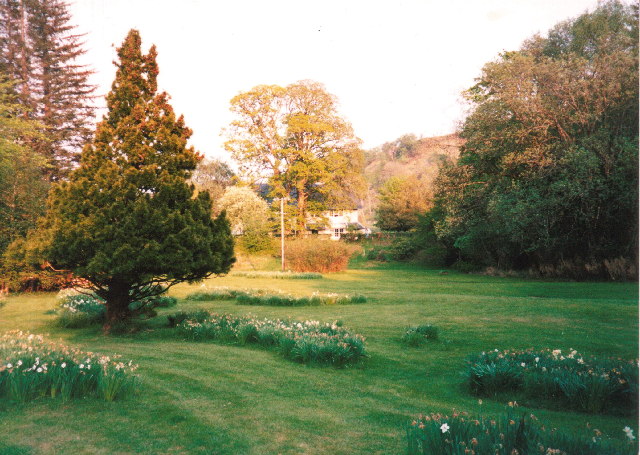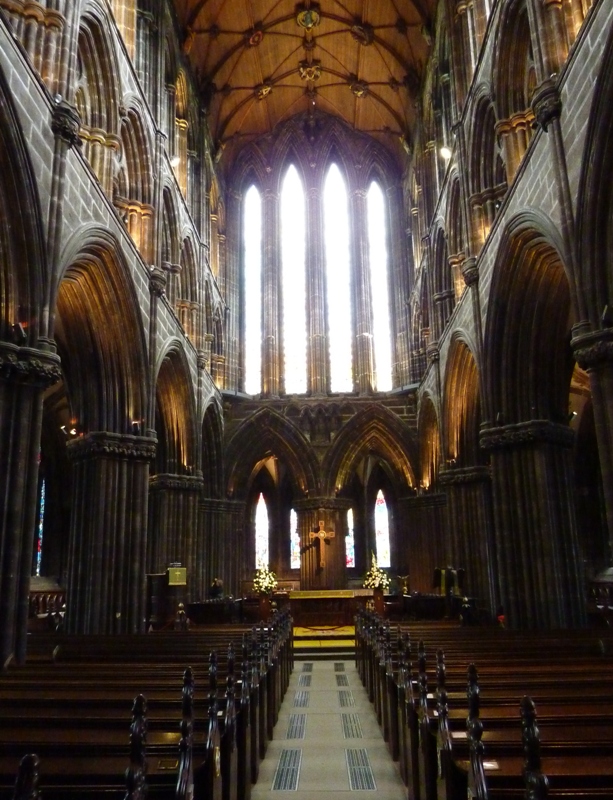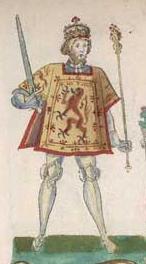|
Treaty Of Westminster (1462)
The Treaty of Westminster (or the Treaty of Westminster-Ardtornish) was signed on 13 February 1462 between Edward IV of England of the House of York and the Scottish John of Islay, Earl of Ross, Lord of the Isles. The agreement proposed that if Scotland was conquered by England, the lands north of the Scottish sea (the Firth of Forth) would be divided between the Lord of the Isles and the Earl of Douglas to be held from the crown of England, while the Earl of Douglas would hold Scotland south of the Firth. Background The Scottish crown in the minority of James III of Scotland had taken the Lancastrian side in the Wars of the Roses by welcoming the fugitive Henry VI of England. Edward IV was forming new alliances with disaffected English and Scottish nobles to reduce the threat posed by the exiled former king, now in the hands of James III's mother Mary of Guelders. Process The Earl of Douglas and his brother John Douglas of Balvenie made their way to the west of Scotland w ... [...More Info...] [...Related Items...] OR: [Wikipedia] [Google] [Baidu] |
Ardtornish Castle Ruins
Ardtornish ( gd, Àird Tòirinis) is a Highland Council area, Highland estate in Scotland located in Morvern, Lochaber. Ardtornish House is famous for its gardens and the estate is the location of the ruined Ardtornish Castle and the still-inhabited Kinlochaline Castle. History In the mid-18th century the area occupied by the current estate was largely in the hands of Cameron of Glendessary, with some property to the east and south the lands of Maclean of Kingairloch and the Duke of Argyll. A small area near the head of Loch Aline was owned by Murray of Stanhope. By 1800 Cameron's lands were under the control of a variety of new superiors including Maclean of Inverscaddle, MacDonald of Borrodale and MacLachlan of Callart with Stanhope's land also being held by MacLachlan. By 1850 radical changes had occurred. In 1845 MacDonald's land to the east of Loch Aline had become the Achranich Estate owned by Octavius Smith, a Londoner whose father had made his money in grocery wholes ... [...More Info...] [...Related Items...] OR: [Wikipedia] [Google] [Baidu] |
Westminster Palace
The Palace of Westminster serves as the meeting place for both the House of Commons of the United Kingdom, House of Commons and the House of Lords, the two houses of the Parliament of the United Kingdom. Informally known as the Houses of Parliament, the Palace lies on the north bank of the River Thames in the City of Westminster, in central London, England. Its name, which derives from the neighbouring Westminster Abbey, may refer to several historic structures but most often: the ''Old Palace'', a England in the Middle Ages, medieval building-complex largely Burning of Parliament, destroyed by fire in 1834, or its replacement, the ''New Palace'' that stands today. The palace is owned by the Crown. Committees appointed by both houses manage the building and report to the Speaker of the House of Commons (United Kingdom), Speaker of the House of Commons and to the Lord Speaker. The first royal palace constructed on the site dated from the 11th century, and Westminster beca ... [...More Info...] [...Related Items...] OR: [Wikipedia] [Google] [Baidu] |
Treaty Of Perpetual Peace (1502)
The Treaty of Perpetual Peace was signed by James IV of Scotland and Henry VII of England in 1502. It agreed to end the intermittent warfare between Scotland and England which had been waged over the previous two hundred years, and, although it failed in this respect, as hostilities continued intermittently throughout the 16th century, it led to the Union of the Crowns 101 years later. Negotiations As part of the treaty, a marriage was agreed upon between James IV and Margaret Tudor, the daughter of Henry VII. Andrew Forman and the poet William Dunbar were members of the Scottish embassy who negotiated the treaty in London. Peace between England and Scotland had already been established by the Treaty of Ayton, brokered by Pedro de Ayala in 1497. Apart from the marriage, the treaty sought to outline various rules and processes for administering the English and Scottish borders and prevent local cross-border conflicts from escalating to war. The treaty was signed at Richmond Pala ... [...More Info...] [...Related Items...] OR: [Wikipedia] [Google] [Baidu] |
Archibald Douglas, 5th Earl Of Angus
Archibald Douglas, 5th Earl of Angus (c. 1449October 1513), was a Scottish nobleman, peer, politician, and magnate. Tradition has accorded him the nickname Archibald 'Bell-the-Cat' due to his association with the 1482 rebellion against James III of Scotland. He became one of the most powerful nobleman in Scotland through his influential position on the Scottish Marches, and a willingness to be involved in multiple rebellions in the reigns of James III and James IV of Scotland. Parents and succession Archibald Douglas, eldest son of George Douglas, 4th Earl of Angus, head of the Red Douglas line, was born at Tantallon Castle, East Lothian, around 1449. His mother was Isabella Sibbald, daughter of the Master of the Household of James II of Scotland. During the turbulent 1450s, when Archibald was growing up, his father came out in support of James II, thereby pitching himself against many of his own clan, and the Black Douglas line in particular, who were in rebellion against ... [...More Info...] [...Related Items...] OR: [Wikipedia] [Google] [Baidu] |
Lordship Of The Isles
The Lord of the Isles or King of the Isles ( gd, Triath nan Eilean or ) is a title of Scottish nobility with historical roots that go back beyond the Kingdom of Scotland. It began with Somerled in the 12th century and thereafter the title was held by a series of his descendants, the Norse-Gaelic rulers of the Isle of Man and Argyll and the islands of Scotland in the Middle Ages. They wielded sea-power with fleets of galleys (birlinns). Although they were, at times, nominal vassals of the Kings of Norway, Ireland, or Scotland, the island chiefs remained functionally independent for many centuries. Their territory included much of Argyll, the Isles of Arran, Bute, Islay, the Isle of Man, Hebrides (Skye and Ross from 1438), Knoydart, Ardnamurchan, and the Kintyre peninsula. At their height they were the greatest landowners and most powerful lords after the Kings of England and Scotland. The end of the MacDonald Lords came in 1493 when John MacDonald II had his ancestral homel ... [...More Info...] [...Related Items...] OR: [Wikipedia] [Google] [Baidu] |
Raid On Ross
The Raid on Ross was a conflict that took place in 1491 in the Scottish Highlands. It was fought between the Clan Mackenzie and several other clans, including the Clan MacDonald of Lochalsh, Clan MacDonald of Clanranald, the Clan Cameron, and the Chattan Confederation of Clan Mackintosh. History Ewen Cameron, chief of Clan Cameron was joined by Alexander MacDonald of Lochalsh, Clan Ranald of Garmoran and Lochaber and the Chattan Confederation. The Chattan Confederation must have made peace with their enemies the Clan Cameron. Together the clans went on a raid into the county of Ross-shire. During the raid they clashed with the Clan Mackenzie of Kintail. They then advanced from Lochaber to Badennoch where they were even joined by the Clan Mackintosh. They then proceeded to Inverness where they stormed Inverness Castle and Mackintosh placed a garrison in it. The Macdonald Lords of Lochalsh appear at this time to have had strong claims upon the clans to follow them in the field. ... [...More Info...] [...Related Items...] OR: [Wikipedia] [Google] [Baidu] |
Skye
The Isle of Skye, or simply Skye (; gd, An t-Eilean Sgitheanach or ; sco, Isle o Skye), is the largest and northernmost of the major islands in the Inner Hebrides of Scotland. The island's peninsulas radiate from a mountainous hub dominated by the Cuillin, the rocky slopes of which provide some of the most dramatic mountain scenery in the country. Slesser (1981) p. 19. Although has been suggested to describe a winged shape, no definitive agreement exists as to the name's origins. The island has been occupied since the Mesolithic period, and over its history has been occupied at various times by Celtic tribes including the Picts and the Gaels, Scandinavian Vikings, and most notably the powerful integrated Norse-Gaels clans of MacLeod and MacDonald. The island was considered to be under Norwegian suzerainty until the 1266 Treaty of Perth, which transferred control over to Scotland. The 18th-century Jacobite risings led to the breaking-up of the clan system and later clearanc ... [...More Info...] [...Related Items...] OR: [Wikipedia] [Google] [Baidu] |
Quitclaim
Generally, a quitclaim is a formal renunciation of a legal claim against some other person, or of a right to land. A person who quitclaims renounces or relinquishes a claim to some legal right, or transfers a legal interest in land. Originally a common law concept dating back to Medieval England, the expression is in modern times mostly restricted to North American law, where it often refers specifically to a transfer of ownership or some other interest in real property. Commonly, quitclaims are used in situations where a ''grantor'' transfers any interest they have in property to a recipient (the ''grantee'') but without offering any guarantee as to the extent of that interest. There may even be no guarantee that the grantor owns the property or has any legal interest in it whatsoever. Specific situations where a precise definition of the grantor's interest (if any) may be unnecessary include property transferred as a gift, to a family member, or into a business entity. The legal ... [...More Info...] [...Related Items...] OR: [Wikipedia] [Google] [Baidu] |
Treaty Of York (1464)
The Treaty of York (1464) was made between England and Scotland on 1 June 1464 at York and was intended to establish 15 years of peace. Previously Scotland had supported the defeated House of Lancaster in the English civil War of the Roses. Background At the time of the negotiation Alexander Stewart, Duke of Albany and Bishop Spens were prisoners in England. Scottish foreign policy was dominated by Bishop James Kennedy after the death of Mary of Gueldres in December 1463. As practical support from Louis XI of France was unlikely Scotland was forced to abandon its alliance with the House of Lancaster and treat with the Yorkist Edward IV of England. Previously, the Lancastrian Henry VI of England, his wife Margaret of Anjou and son Prince Edward had found refuge in Scotland after the battle of Towton in 1461. Margaret had promised to deliver Berwick upon Tweed and Carlisle to Scotland, but these plans came to nothing permanent beyond the temporary handover of Berwick for twent ... [...More Info...] [...Related Items...] OR: [Wikipedia] [Google] [Baidu] |
Andrew Lang
Andrew Lang (31 March 1844 – 20 July 1912) was a Scottish poet, novelist, literary critic, and contributor to the field of anthropology. He is best known as a collector of folk and fairy tales. The Andrew Lang lectures at the University of St Andrews are named after him. Biography Lang was born in 1844 in Selkirk, Scottish Borders. He was the eldest of the eight children born to John Lang, the town clerk of Selkirk, and his wife Jane Plenderleath Sellar, who was the daughter of Patrick Sellar, factor to the first Duke of Sutherland. On 17 April 1875, he married Leonora Blanche Alleyne, youngest daughter of C. T. Alleyne of Clifton and Barbados. She was (or should have been) variously credited as author, collaborator, or translator of '' Lang's Color/Rainbow Fairy Books'' which he edited. He was educated at Selkirk Grammar School, Loretto School, and the Edinburgh Academy, as well as the University of St Andrews and Balliol College, Oxford, where he took a first ... [...More Info...] [...Related Items...] OR: [Wikipedia] [Google] [Baidu] |
Norman Macdougall
Norman Macdougall is a Scottish historian who is known for writing about Scottish crown politics. He was a senior lecturer in Scottish history at the University of St Andrews. Macdougall has written biographies of the kings James III of Scotland and James IV of Scotland. He was also responsible for editing a biography of James V of Scotland. Other publications include a work on the Auld Alliance, and editing ''Scotland and War'', to which he also contributed an article on ''James IV's Great Michael ''Michael'', popularly known as ''Great Michael'', was a carrack or great ship of the Royal Scottish Navy. She was the largest ship built by King James IV of Scotland James IV (17 March 1473 – 9 September 1513) was King of Scotland fr ...''. References External links list of publications 21st-century Scottish historians Academics of the University of St Andrews Living people Year of birth missing (living people) {{Scotland-academic-bio-stub ... [...More Info...] [...Related Items...] OR: [Wikipedia] [Google] [Baidu] |
Hebrides
The Hebrides (; gd, Innse Gall, ; non, Suðreyjar, "southern isles") are an archipelago off the west coast of the Scottish mainland. The islands fall into two main groups, based on their proximity to the mainland: the Inner and Outer Hebrides. These islands have a long history of occupation (dating back to the Mesolithic period), and the culture of the inhabitants has been successively influenced by the cultures of Celtic-speaking, Norse-speaking, and English-speaking peoples. This diversity is reflected in the various names given to the islands, which are derived from the different languages that have been spoken there at various points in their history. The Hebrides are where much of Scottish Gaelic literature and Gaelic music has historically originated. Today, the economy of the islands is dependent on crofting, fishing, tourism, the oil industry, and renewable energy. The Hebrides have less biodiversity than mainland Scotland, but a significant number of seals an ... [...More Info...] [...Related Items...] OR: [Wikipedia] [Google] [Baidu] |


.jpg)





